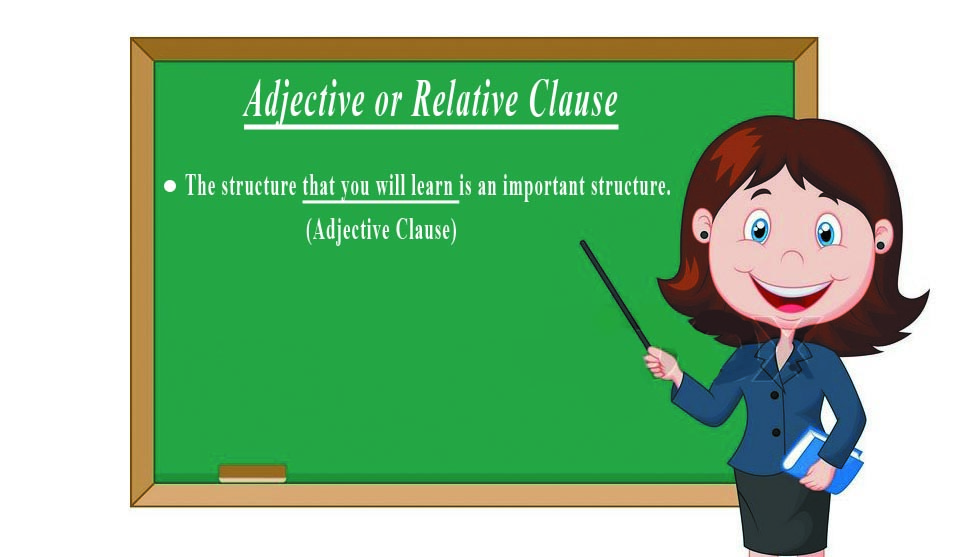We have already learned about the clause and independent and dependent clauses. We learned that a dependent or subordinate clause can function as an adjective, as a noun or an adverb in a sentence. In this lesson we will take a look at the Adjective clause or relative clause. If you don’t know about independent and dependent clauses we recommend you to click here and learn about them first.

Adjective Clause or Relative Clause
Indeed adjectives are used to modify nouns in a sentence or they give more information about the noun or pronoun in the sentence. In the same way we can define adjective clause as follow:
A dependent clause that functions as an adjective in a sentence is called adjective clause or relative clause.
An adjective clause usually comes after the noun it modifies, and begins with a relative pronoun or relative adverb. Adjective clauses, like all clauses include a subject and a verb, often the subject of relative clause is the relative pronoun or relative adverb that functions as a subject in the relative clause.
List of Relative Pronouns and Relative Adverbs:
Relative Pronouns: who, whom, which, that and whose.
Relative Adverbs: when, why, and where.
- He wears a shirt which looks beautiful.
(The subject of the relative clause is “which” and the verb is “looks”, this clause is giving us more information about the “shirt”). - The house where I live is consisting four rooms.
(The subject of the relative clause is “where” and the verb is “live”, this clause gives us more information about the “house”). - The book which I like is helpful in preparation for the test.
How to identify an adjective clause?
1. An adjective clause like other clauses will always contain both a subject and a verb.
2. An adjective clause will always begin with a relative pronoun or relative adverb.
3. Eventually, a relative clause tells you which one, what kind or how many. Moreover, relative clause gives more information about the noun or pronoun that comes before it. If so, then you have identified the adjective clause.
- The car, which is parked outside, is my brother’s.
- The car that was parked outside is more expansive than this one.
Click here to know which relative pronoun to use: which or that?
Comma Splices
1. Don’t use commas if the relative clause gives essential information about the noun or pronoun. (Called restrictive clause.)
- The car that was parked outside is more expansive than this one.
2. Use commas if the relative clause gives additional information about the noun or pronoun. (Called non-restrictive clause.)
- The car, which is parked outside, is my brother’s.
Can you omit the relative pronoun?
Relative pronouns can be omitted if the sentence gives complete meaning after omitting the relative pronoun. If the sentence doesn’t give complete meaning after omitting the relative pronoun, then don’t omit it.
- The teacher whom you were talking about is her brother. Or
- The teacher you were talking about is her brother.
- He wears a shirt which looks beautiful. (Can’t omit the relative pronoun)
